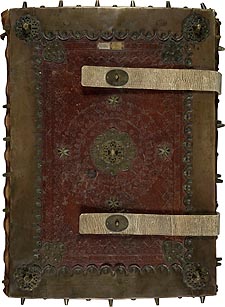Introduction
![]()
Among the many innovations that transformed Europe in the Middle Ages,
perhaps none was more central than the metamorphosis of the written word.
The evolution of writing in this period reached a dramatic climax in the
1450s, when Johann Gutenberg invented moveable metal type—and revolutionized
human communication. This exhibition traces the history of the medieval
book—its appearance, content, audiences, and forms—from the
9th to the 15th centuries. Drawn from the holdings of Cornell Library’s
Division of Rare and Manuscript Collections, the exhibition presents a
rich variety of medieval manuscripts and printed books, from early religious
manuscripts and illuminated prayerbooks to the secular works of classical
antiquity and the first books printed from metal type.
![]()
Lombard Gradual. Northern Italy, mid-fifteenth
century.
![]()

Copyright
© 2002 Division of Rare & Manuscript
Collections
2B Carl A. Kroch Library, Cornell University, Ithaca, NY, 14853
Phone Number: (607) 255-3530. Fax Number: (607) 255-9524
For
reference questions, send mail to:
rareref@cornell.edu
If you have questions or comments about the site, send mail to: webmaster.
